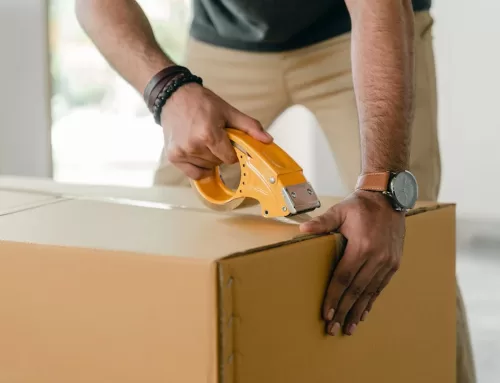When you’re moving pieces of furniture, there isn’t much preparation involved. While a couch is heavy and cumbersome, it doesn’t need to be taken apart in order to go onto a moving truck. Major appliances, on the other hand, need to be specially prepared in order to move them. This task is something you’ll have to undertake yourself – the moving company can hire a third party company to do it on your behalf as they do not handle this task on their own. Don’t fret, though. We’ve got tips on how to get your major appliances ready for moving.
Refrigerator and Freezer
First, defrost your refrigerator and freezer. That means you’ll have to take everything out of them and unplug the unit. You should start the defrosting process 24 hours in advance. If your fridge has an automatic ice maker or water dispenser, disconnect the water line according to the manufacturer’s guidelines. Check that the water line is completely drained. Should you feel uncomfortable disconnecting the water line, hire a plumber. After the freezer has defrosted, clean all the surfaces and dry them thoroughly to prevent mildew. The next step is taking out all of the racks, shelves, crispers and storage bins out of the fridge and freezer. You can leave them inside of the unit. However, you’ll need to secure them to the sides of the fridge so they won’t break in transit. The last thing you’ll need to do is tape the electrical cord to the back of the refrigerator.
Stove and Oven
Run the oven’s self-cleaning cycle several days before you plan to transport it. Bear in mind that after the self-cleaning cycle is completed, you’ll still need to clean the oven with a damp cloth to remove any remaining dirt. If the stovetop has electric burner elements, remove them and run a wet, soapy rag over them to clean them off. Wipe down the stovetop to get rid of any dirt. Don’t forget to dry it and the burners carefully. If your stove has electric burner elements, tape them down so they won’t break during the move. Do you have a gas stove? Take off the surface grates and clean them.
Next, take out the storage drawer underneath the stove and empty it. You’ll also need to remove the broiler pan and oven racks. If you want to keep them inside the oven during the move, tape them to the inside of the unit so they won’t move around and cause damage. Unplug the oven from its power source. If you have a gas oven, you have to turn off the gas supply before disconnecting the gas line. Consult a professional if you feel uncomfortable doing this yourself.
Finally, tape down all of the knobs. You can also remove them, but don’t forget where you put them! Secure the oven door with tape, too. The electrical cord should also be taped to the back of the unit to keep it safe during transit.
Dishwasher
After the last time you use your dishwasher at your current home, leave its door open for at least 24 hours. Mildew could grow if you leave the door closed until you move the unit to its new location. Once you’ve emptied all the dishes, tape the racks to the sides of the dishwasher with masking tape. Turn off the water supply at the shut-off valve. It’s usually located under the kitchen sink. Disconnect the drain and water-supply lines. If the thought of doing this yourself is daunting, hire a plumber. Towels are handy to clean up any water that might leak from the lines. Make sure that the lines have drained completely. If your dishwasher’s power supply runs through the wall, unplug it. Is your dishwasher hardwired? You’ll have to disconnect the power lines. An electrician can also do this if you’re not comfortable doing it on your own.
The next step is to unscrew the mounting brackets, which will loosen the dishwasher from the countertop. Make sure the hoses are dry before wrapping them in towels and packing them inside the dishwasher. The last thing you’ll need to do is to tape the electrical cord to the back of the unit after closing the door.
Washing Machine
Once you’ve emptied the washing machine, make sure the drum is completely dry. The drum will need to be secured. Check your instruction manual on how to do this, although most manufacturers recommend bolting the drum. Unplug the washing machine and turn off the water supply. Remove the machine’s water supply hoses from the hot and cold water faucets. Keep a bucket handy to catch the water as the hoses drain.
Remove the main drain hose and empty it into the bucket. Once the hoses are empty, wrap them in towels and store them inside the washer. Close the lid and use masking tape to keep it shut during transit. Then, take some tape and secure the electrical cord to the back of the unit.
Dryer
Clean out the lint filter after you’ve emptied the dryer. Unplug it, unless you’ve got a dryer that runs off of gas. In that case, you’ll have to shut off the gas and disconnect the gas supply line. If you don’t feel comfortable doing that yourself, hire a professional.
Carefully move the dryer away from the wall so you can access the vent. Next, disconnect it and take it apart. You’ll need to clean it thoroughly to remove dust, lint and dirt. Tape the dryer’s door shut and use a little more masking tape to secure the cord to the back of the unit.
Remember, appliances are expensive to replace. Transporting them carefully is important. Follow these instructions, and you’ll be able to use them in your new home for years to come.




